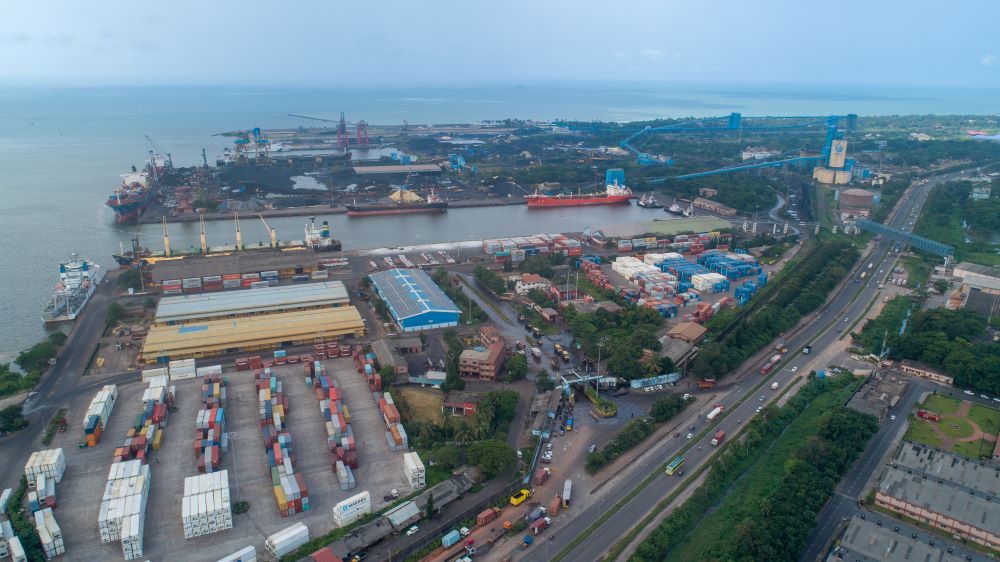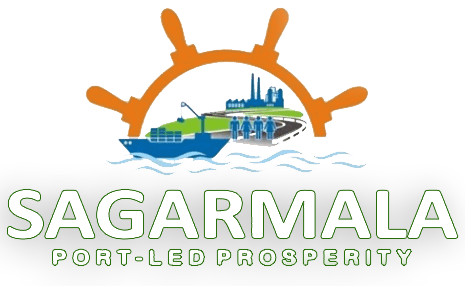
Mangalore has a long history dating back to the early Christian era. Mangalore is mentioned in the manuscripts of the Great Library of Alexandria, Egypt. Roman history describes Mangalore as a Port on the mouth of the river Netras (Netravati) as the old port was located at the confluence of Gurpur and Netravati rivers. Greek drama also alludes to Mangalore described as Mangala. Ptolemy, the astronomer and famous explorer of the 2nd century makes a mention of Mangalore in his travelogue. During the time of Vijayanagara Empire, Arab traders had established a flourishing trade in silk and spices between Mangalore and West Asia and even now is known as the Gateway of Karnataka.
Situated at the convergence of Gurupur and Nethravathi rivers, the Old Port(Bunder) had its own constraints to meet the growing demand for sea trade. The need for a new port was felt and the New Mangalore Port was born.
The Mangalore Harbour Project was set up in the year 1962. The maritime works on the Mangalore Harbour project commenced in 1968. The New Mangalore Port, the only Major Port of Karnataka was declared as the 9th Major Port on 4th May 1974 and was formally inaugurated by the then Prime Minister of India, Smt. Indira Gandhi on 11th January 1975. The provisions of the Major Port Trust Act 1963 were applied to erstwhile NMPT with effect from 1.4.1980. Since then the Port has been functioning as a centre of activities for Importers and Exporters of this region. New Mangalore Port Trust has been notified as New Mangalore Port Authority w.e.f. 03-11-2021 under the Major Port Authorities Act. 2021.
Over the years the Port has grown from the humble beginning of handling less than a lakh tonnes of traffic to the present level of handling 46.01 million tonnes during the last financial year 2024-25. The major commodities exported through the Port are POL Products, iron ore pellets, containerized cargo, etc. The major commodities imported through the Port are POL Crude for MRPL, Cement, coal, fertilizer, edible oil, liquid chemicals, containerized cargo etc.The Port is providing all the facilities for handling the cargo of mega Industries like MRPLONGC, OMPL, KIOCL, TOTAL GAZ, MCF, HPCL,IOC, UPCL, etc.
Golden Jubilee Year 2025:
NMPA will be completing 50 years of its service to the Nation during 2025. Various Projects and programmes are being planned to celebrate this event in a befitting manner. NMPA stands committed to be a partner in progress to customer. It helps Indian companies in their export-led growth strategies. For buyers in India, it helps to bring down transportation costs and improve competitiveness. For the tourists, the port is a window to India’s rich cultural heritage. NMPA will be always selected hub for massive volumes, the best cargo handling and rapid connections to other ports and the hinterland. Like the waves that never sleep, the New Mangalore Port ceaselessly strives for the progress of all stake holders involved.
MIV 2030:
With the objective of propelling India to the forefront of Global Maritime sector, the Ministry of Ports, Shipping and Waterways had formulated the Maritime India Vision 2030, that acts as the blueprint for coordinated and accelerated growth through over 150 initiatives identified across 10 themes. Through development of world class port infrastructure, adopting technology and innovations, strengthening policy and institutional framework, the MIV 2030 aims to improve logistics efficiency, promote ease of doing business for the stakeholders, while ensuring safe, sustainable and green maritime ecosystem in India. As part of MIV 2030, NMPA has improved mechanization of port operations too 90%, achieved 100% solar power utilization, upgraded the cruise terminal etc among the many initiatives implemented. The various policy interventions of the ministry such as Model Concession Agreement 2021, Harit Sagar Green Port Guidelines, Green Tug Transition Program etc have also been undertaken at NMPA.
AMRIT KAL 2047:
Further, at the Global Maritime India Summit 2023, the Ministry of Ports, Shipping and Waterways launched the Maritime Amritkal Vision 2047, that aims to set the roadmap for the Indian maritime logistics infrastructure as envisaged by the year 2047, through 11 themes and leveraging the recent developments of National Logistics Policy (NLP) and the PM Gati Shakti National Master Plan (PMGS-NMP). As part of MAKV 2047, NMPA has initiated adoption of autonomous technologies aimed at transitioning to smart port, and is also planning to explore the possibility of a new satellite port to further develop a strong maritime cluster within the state of Karnataka. In recognition of the vast knowledge and experience of over three decades across the maritime sector in various technical and leadership capacities, the Ministry of Ports, Shipping and Waterways has entrusted Chairman, NMPA to spearhead the development of the roadmap for Automation and Technology adoption across the Major Ports.
MASTER PLAN 2047:
Towards 2047 vision, NMPA has formulated a Master Plan 2047, encompassing infrastructure and capacity augmentation, improving hinterland connectivity and diversifying cargo profile to expand the geographical coverage and volume of trade catered by the port.
| Chairman | Period | |
|---|---|---|
| 1 | Shri E.S. Rajabather | 01-04-1980 to 17-10-1985 |
| 2 | Shri B. Mahapatra, IAS | 07-09-1987 to 07-09-1992 |
| 3 | Shri A.N.M. Kishore | 17-06-1993 to 31-01-1997 |
| 4 | Capt. R. Ramkumar | 15-04-1997 to 30-4-2001 |
| 5 | Shri N. Dhana Raju | 25-07-2001 to 31-10-2003 |
| 6 | Dr. P. Tamilvanan | 10-12-2004 to 31-12-2013 |
| 7 | Shri P.C. Parida | 15-03-2014 to 31-07-2017 |
| 8 | Dr. Venkata Ramana Akkaraju | 11-06-2019 to -- |







